- Home
- John Updike
Odd Jobs: Essays and Criticism Page 13
Odd Jobs: Essays and Criticism Read online
Page 13
The Importance of Fiction
WELL, when the importance of something has to be proclaimed, it can’t be all that important. And certainly most of the people in the United States get along without reading fiction, and more and more magazines get along without printing it. Even Esquire, which used to run short stories as automatically as he-men smoked unfiltered cigarettes, has to whip itself up and cheer itself on to give us an issue like this one [its August 1984 Special Fiction Issue].
The old throwbacks still producing fiction should be grateful, and we are. It’s hard to believe that this fragile business ever had any muscle, but it did. In Gutenberg’s Gymnasium, Dickens and Balzac worked out on the high rings and the Brontë sisters did the backward flip in unison on the balance beam and Harriet Beecher Stowe bench-pressed more kilos than Herman Melville, while Flaubert and Mark Twain were just a double blur on the parallel bars and the bourgeoisie in the bleachers went wild. Even in the days of network radio, fiction put hair on Hemingway’s chest and gin in Fitzgerald’s glass and that far-off starry look in Faulkner’s eye, those days when the mules weren’t running. But after Hitler’s coonskin was nailed to the barn door and the boys came back to make babies and put on gray flannel suits, something went out of fiction. Those good folks who sat around in the kitchen near the wood stove reading about Mr. Tutt and Perry Mason in the Saturday Evening Post had slipped out the back door and bought oil burners and television sets, and the aura of the party being over was so pervasive that Norman Mailer tried to be a party all by himself. Saul Bellow kept winning the prizes but there was something effete and professorial about his appeal, compared with the way Sinclair Lewis and John Steinbeck had reached down and given Main Street a shake, and the way those two-dollar books of theirs had stood on the windowsills of every small-town piano teacher’s front parlor.
The Sixties were when the demise of fiction became something to crow about. Philip Roth told us that life in America had become so barbaric and bizarre that no fiction could hold a candle to the grotesque truth. Truman Capote allowed as how he had invented a new kind of narrative treat, the non-fiction novel, that made the un-non kind as obsolete as hand-churned ice cream. Tom Wolfe (the younger) let us ineluctably know that his new journalism was zippier, grabbier, funnier, wilder, and truer-to-life than any old wistful bit of fiction published by, say, those tiny giants over at The New Yorker. Even in The New Yorker, as the old two-column departments died off and were replaced by learned specialists whose exhaustive poop overflowed the narrow columns like freshly singed popcorn, there was less space for fiction than there had been in the days of Bob Benchley or even the days of Nat Benchley. The revolution had little use for fiction: fiction was sublimation, it was Leavis and Trilling, it was graduate school; it was civilization and its discontents, it was the lonely crowd. Fiction was how you consoled yourself in the dark ages before love beads and Lucy in the Sky with Diamonds. A revolution sings songs and trashes chainstore windows; it does things in a bunch, and nothing is more antisocial and non-tribal than one individual sitting in a quiet room coding make-believe for another individual to decipher in a quiet room maybe tens of years and thousands of miles away.
Accordingly, the revolution left us rock music and co-ed dormitories but not much in the way of fiction. Who now remembers Marge Piercy’s Dance the Eagle to Sleep and Gurney Norman’s Divine Right’s Trip? I do, because I reviewed them. Otherwise, there were Pynchon and Kesey, who have subsequently tended to imitate the sound of one hand clapping. The post-revolutionary anticlimax, though, has not lacked for bards, beginning with Ann Beattie, who found the right filtered tone to let the lack of sunshine in, and who, young as she is, has played dearth mother to a vast fresh bevy of tender/tough female talents, such as Mary Robison, Laurie Colwin, Elizabeth Tallent, T. Gertler, Andrea Lee, Deborah Eisenberg, to name but a few. The young males aren’t quite so vivid, since, having made their entry splash, they tend to sink into full-time extra-literary employment or to sidestroke toward Hollywood, like John Sayles. But, however the generations take them, fiction’s magnificent opportunities, as demonstrated in the classics, abide.
Fiction is nothing less than the subtlest instrument for self-examination and self-display that Mankind has invented yet. Psychology and X-rays bring up some portentous shadows, and demographics and stroboscopic photography do some fine breakdowns, but for the full parfum and effluvia of being human, for feathery ambiguity and rank facticity, for the air and iron, fire and spit of our daily mortal adventure there is nothing like fiction: it makes sociology look priggish, history problematical, the cinema two-dimensional, and The National Enquirer as silly as last week’s cereal box.
In fiction, everything that searchers for the important tend to leave out is left in, and what they would have in is left out. Stendhal had served devotedly under Napoleon and was one of the most lucid thinkers in Europe, but what Fabrizio, in The Charterhouse of Parma, makes of Waterloo is sheer confusion, highlighted by a running conversation with a cantinière steering her cartful of brandy through the thick of the battle. For Tolstoy, Napoleon was an excuse for the Moscow aristocrats to gossip and to push on with their spiritual searches; for Jane Austen, Napoleon was the reason the English countryside was so sparsely equipped with prospective husbands. Thus a vast historical presence refracts down into little lives which are precious only because they resemble our own. Kutuzov, Tolstoy’s splendidly fictionalized version of an actual Russian general, reads French romances while the steppes around him tremble at the approach of the superman, the master strategist, the general of supreme genius. Romances safeguard the importance of our sentiments amid the uncontrollable large-scale surges that constitute history; the inner lives of the obscure, as Erich Auerbach points out in his Mimesis, have been, from the New Testament on, the peculiar and precious burden of the Western narrative imagination.
The fiction writer is the ombudsman who argues our humble, dubious case in the halls of eternal record. Are defacation, tipsy bar babble, days of accumulating small defeats, and tired, compromised, smelly connubial love part of our existence? Then put them into literature alongside of Homer, says Ulysses. Has a life been ill-spent in snobbery, inaction, neurasthenia, and heartache? Then make that life into a verbal cathedral, says Remembrance of Things Past. Do pathetic and senseless-seeming murders appear daily in the newspapers? Then show the humble aspirations and good intentions and small missteps that inexorably lead to such ruin, say Tess of the D’Urbervilles and An American Tragedy. Feeling nervous, and as though things don’t quite add up? Then write like Virginia Woolf, and give us actuality in its sliding, luminous increments. Feeling worse than nervous, and certain that the world is a mess? Then write like Céline, and wake up the French language. Want a taste of Latin American backcountry blues? Try Graham Greene or Gabriel García Márquez. Want to know what goes on in those tacky developments across the highway? Let Raymond Carver or Bobbie Ann Mason tell you. Curious about the condo life in the new, homogenized Deep South? Here comes Frederick Barthelme. No soul or locale is too humble to be the site of entertaining and instructive fiction. Indeed, all other things being equal, the rich and glamorous are less fertile ground than the poor and plain, and the dusty corners of the world of more real interest than its glittering, already sufficiently publicized centers.
Yet we do not read fiction for information, informative though it can be. Unlike journalism, history, or sociology, fiction does not give us facts snug in their accredited truth, to be accepted and absorbed like pills, for our undoubted good; we make fiction true, as we read it. Fiction can poison our minds, as it did those of Madame Bovary and Don Quixote. It offers to enlarge our sense of possibilities, of potential freedom; and freedom is dangerous. The bourgeois, capitalist world, compared with the medieval hierarchies it supplanted and with the Communist hierarchies that would supplant it, is a dangerous one, where failure can be absolute and success may be short-lived. The novel and the short story rose with the bourgeoisie, as exercises in
democratic feeling and in individual adventure. Pamela, The Pilgrim’s Progress, Robinson Crusoe—what do they tell us but that our entrepreneurism, on one level or another, may succeed? If fiction is in decline, it is because we have lost faith in the capacity of the individual to venture forth and suffer the consequences of his dreams. Myself, I feel that this most flexible and capacious of artistic forms still holds out its immense space to our imaginations, still answers to a hope within us of more adventure. What is important, if not the human individual? And where can individuality be better confronted, appraised, and enjoyed than in fiction’s shapely lies?
High Art Versus Popular Culture
LIKE MANY ANOTHER would-be practitioner in the arts, I caught the bug from popular culture: coloring books, animated cartoons, comic books, songs on the radio, radio drama and comedy, the so-called slick magazines, and the movies. These, in the era before television, filled my waking and dream life with images of glamour, heroism, grace, droll resilience, and doomed beauty. To get on the mysterious other side of this veil of illusion and become, like Frank Morgan’s foxy Wizard of Oz, a producer of it, seemed self-evidently worth aspiring to. I began by copying comic-strip characters from the daily newspaper and have ended up by writing novels and book reviews, but the causes of this deflected career—opportunity, aptitude—seem merely accidental compared with the seminal impulse toward pretense and performance; I would not have minded becoming a movie star like Errol Flynn or a pop comedian like Jack Benny or a dancer like Ray Bolger. Just as long as it wasn’t a real job, that took place in the world I could see around me, where my father and the fathers of my friends labored.
Since popular culture nurtures us as children and serves lifelong as culture enough for the majority of our fellow countrymen, it seems ungrateful to seek out what distinguishes it from “high” art. In the field of fiction, the distinction seems especially elusive, since all fiction is designed to be read and, before that, to be bought. Producing a best-seller does not utterly disgrace a “serious” novelist—Nabokov, Pasternak, Philip Roth, E. L. Doctorow have all done it—but a consistent best-seller producer like James Michener and Stephen King makes us uneasy; there must be something wrong with him. The novel, but a few centuries old, began as a form of popular culture, and the large and weepy publics of Dickens and Dostoevsky are part, though not the “highest” part, of their greatness. This century brought with it a disdain for the crowd-pleasers of the previous, and if Henry James never quite realized that the price of excellence is a large neglect, James Joyce and Marcel Proust certainly did; the publication of their masterpieces required, respectively, heavy patronage and a private income. Yet Mann’s Buddenbrooks was widely enjoyed, and the taint of popular success clung to Hemingway, for all his purism, and commercial dealings pursued the hectically modernist Faulkner.
No convenient market distinction exists in fiction like that in art between commercial illustration, created for reproduction, and easel painting, created for single sale and museum display. Chester Gould’s Dick Tracy is popular culture; Andy Warhol’s copy of Gould’s Dick Tracy is high art. A more complicated appeal is essayed by the latter—ironical, self-referential, and aimed at connoisseurs. High art, we might say, is art which presumes knowledge of other art; popular culture is prepared to deal with the untutored. The difference is not very deep, it seems to me, and crossovers and problematical instances are not hard to find. The thrust—the basic exploitation of our human weakness for color and rhythm, story and spectacle—is the same, and while popular culture need know nothing of high art, a high art entirely detached from popular culture would be as sterile as Esperanto or the Enlightenment religion invented by the philosophes.
Popular Music
FOR MANY, popular music is more pain than pleasure, and any of us, trapped on a subway car with a ghetto blaster or in an elevator leaking old Mantovani, might admit there is much too much of it. That hypothetical visitor from Mars we used to talk about, before Mars was exposed as a spherical pink desert lightly frosted at the poles, would surely be struck by this incessant and apparently inutile accompaniment to earthly lives, as we move from musical alarm clock to car radio to a workplace insidiously saturated with psychologically programmed Muzak through a lunchtime stroll amid mendicant buskers and break-dancers and, after work, to a tinkling drink in a bar with an old-fashioned jukebox and, if not home to a suburban house where teen-age children have their tapes turned way up, then on to a romantic rendezvous orchestrated by a gypsy band at the restaurant, a cocktail pianist with the nightcap, and sleepy old Sinatra records in the dimmed apartment. What do they mean, all these tunes, as miraculously as snowdrops no two quite alike but again like snowdrops melting over the days into gray slush and then into air, thin air?
Hormones, the answer must be. Popular music, save for the small fraction designed to excite martial or religious ardor, has to do with mating and break-up, with love and its losses, with the anticipation of love reaching deep into childhood (Lollypop Pop) and its recollection extending far into senescence (Golden Oldies). We dance, we touch, we shut our eyes, we become the song. From the decades’ massive flow of technologically broadcast songs we each extract an emotional autobiography. The first popular songs that memorably impinged upon my evolution were “Playmates,” with its oddly thrilling invitation to “look down my rain barrel, slide down my cellar door,” and, in 1939, “Oh, Johnny!” The little girls chanted “How you can love!” at me on the way to second grade and back, my ears and cheeks burning and all my conscious desires simply bent upon getting to my next balsa-wood model airplane.
Then came the Great Patriotic War, and “Sleepy Lagoon” and “Paper Doll” and “That Old Black Magic” (icy fingers up and down my spine!) along with the relatively asexual “Mairsy Doats” (but what did it mean, to “kiddley-divey, too”?) and “Praise the Lord and Pass the Ammunition.” Postwar, there was high school, and dances in the gym, and drooping crêpe paper affixed to the basketball backboard, and plump white strapless shoulders in the violet lights, and “Tenderly,” and “They Say It’s Wonderful,” and six boys on the stage doing our local small-band version of the big-band sound, saving (what else?) “Star Dust” for last. The hormones had the tune down pat, though the lyrics still wondered why they spent the lonely nights dreaming of a song. The big-band sound was an erotic engine, a soft machine of sax-throb and phallic clarinet moving down its tracks as irresistibly as the Chattanooga choo-choo. That certain party at the station, in old satin and lace, we used to call Funny Face turned into Doris Day announcing a sentimental journey (“never thought my heart could be so yearny”) whose final prolonged syllable “ho-o-o-ommmmme” pulled open a delicious abyss of female power. On the jukebox at Stephens’ Sweet Shop, the sly laid-back melodiousness of Bing Crosby and the Ink Spots gave way to big, twanging voices: Frankie Laine and Patti Page, “That Lucky Old Sun” and “Tennessee Waltz.” Laine was especially thrilling, hollering to his mules and his ghost riders in the sky and wanting to go where the wild goose went and mincing out the exact specifics of his “dee-zy-yuh” (“we’ll sip a little glass of wine, I’ll gaze into your eyes divine, I’ll feel the touch of your lips, press-sing on mi-yun”). His voice was gutsy; it rubbed those secret spots within.
The popular music of the late Forties and early Fifties, falling between the fading of the big bands and the beginning of rock, is generally forgotten; no jazzomaniacs or rock addicts or show-tune nuts visit its files, and Golden Oldie disc jockeys rarely touch it. But it has preëmpted millions of my neurons with half-remembered titles and lyrics. Girls’ names: “Peg o’ My Heart” and “Amy” and “Laura” and “Linda” (“when I go to sleep, I never count sheep, I count all the charms about Linda”). Strange little men: “The Old Lamplighter” and “Nature Boy” and that old master painter from the faraway hills whom we teen-agers so inevitably recast as the old masturbator. Who could get moony over “Golden Earrings” or “Tree in the Meadow”? We could, that’s who. In 1948 James C.
Petrillo called every orthodox musician out on strike and left us to dream along with ununionized sweet potatoes, banjos, bones, whistling choruses (“Heartaches”), and musical saws; we dreamed on anyhow. “So Tired,” made great in Russ Morgan’s arrangement, was, with “Star Dust,” the epitome of violet-spotlight chic, the draggy end of the high-school dance, the fag end of our sophisticated smoky days—“so tired, so tired of living” and all of seventeen.
Then came college and, for me, a kind of pop silence. There was no music in the libraries then, and little in the dorms—it was believed to interfere with thought processes, rather than (as now) to be essential to them. I do seem to recall, from those four lost years, incredulously auditing in a humble Cambridge eatery Johnny Ray’s “The Little White Cloud That Cried.” I knew it was the end of something, but I didn’t know of how very much. Rock ’n’ roll began to shake the Eisenhower chapel; Elvis Presley suddenly achieved divinity—but all out of my earshot. The first song I remember distinctly getting to me, post-grad, was “Blueberry Hill,” where Fats Domino claimed to have found his thrill. Was finding your thrill anything like kiddley-diveying? No matter: I knew in my hormones what he meant, and just why Chubby Checker wanted to twist again like we did last summer. We had become suburbanites and wage-earners and parents, but our glands were less quiescent than they should have been: the sounds of revolution (Baez and Dylan; Peter, Paul, and Mary; Sonny and Cher) trickled through the Marimekko curtains, and our children taught us to frug. Oh, those glorious piping sugar-harmonied Supremes records before Diana Ross became a law unto herself! And of course the Beatles, who were intellectually ambitious even, and kept going deeper, just like Beethoven. I suppose my heartfelt farewell to popular music came in England, at the end of the Sixties, crooning and thumping and blinking back tears through the endless chorus of “Hey Jude,” in which the Beatles could be heard dissolving. Take a sad song and make it better.

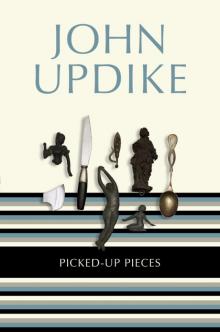 Picked-Up Pieces: Essays
Picked-Up Pieces: Essays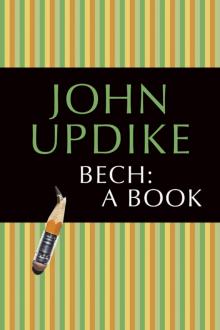 Bech: A Book
Bech: A Book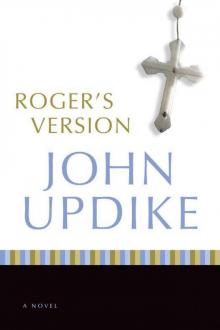 Roger's Version: A Novel
Roger's Version: A Novel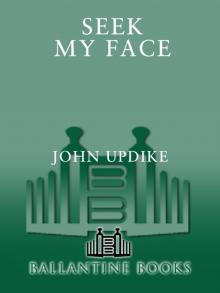 Seek My Face
Seek My Face The Carpentered Hen
The Carpentered Hen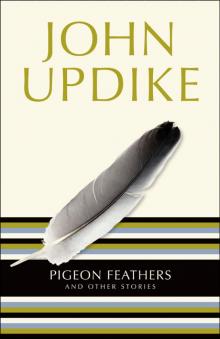 Pigeon Feathers: And Other Stories
Pigeon Feathers: And Other Stories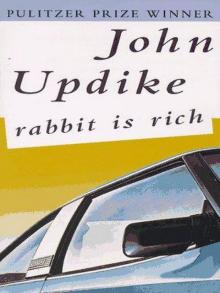 Rabbit Is Rich
Rabbit Is Rich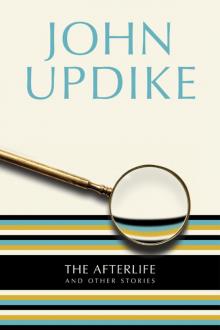 The Afterlife: And Other Stories
The Afterlife: And Other Stories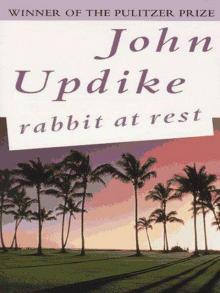 Rabbit at Rest
Rabbit at Rest The Witches of Eastwick
The Witches of Eastwick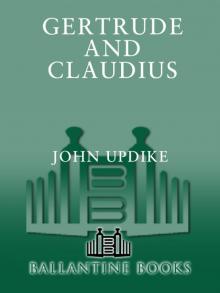 Gertrude and Claudius
Gertrude and Claudius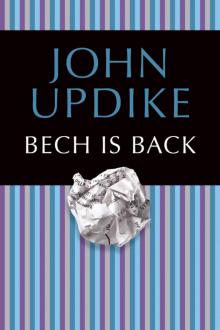 Bech Is Back
Bech Is Back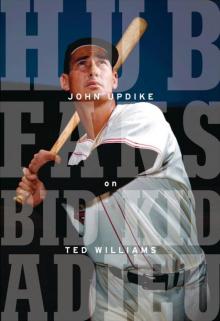 Hub Fans Bid Kid Adieu: John Updike on Ted Williams
Hub Fans Bid Kid Adieu: John Updike on Ted Williams Marry Me: A Romance
Marry Me: A Romance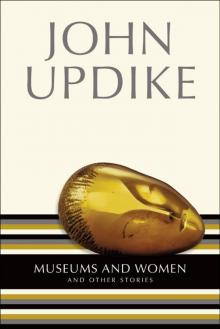 Museums and Women: And Other Stories
Museums and Women: And Other Stories My Father's Tears and Other Stories
My Father's Tears and Other Stories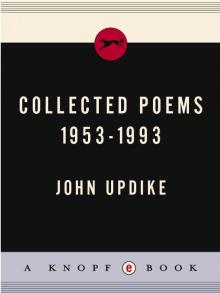 Collected Poems, 1953-1993
Collected Poems, 1953-1993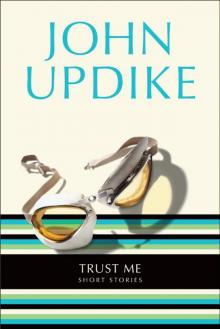 Trust Me: Short Stories
Trust Me: Short Stories Odd Jobs: Essays and Criticism
Odd Jobs: Essays and Criticism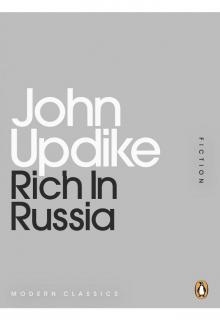 Rich in Russia
Rich in Russia Higher Gossip: Essays and Criticism
Higher Gossip: Essays and Criticism The Widows of Eastwick
The Widows of Eastwick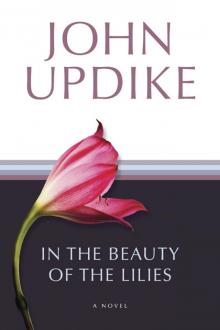 In the Beauty of the Lilies
In the Beauty of the Lilies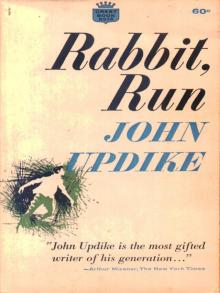 Rabbit, Run
Rabbit, Run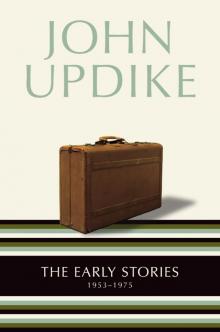 The Early Stories: 1953-1975
The Early Stories: 1953-1975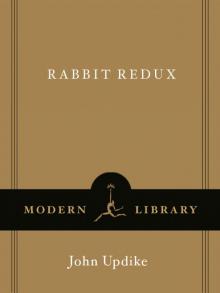 Rabbit Redux
Rabbit Redux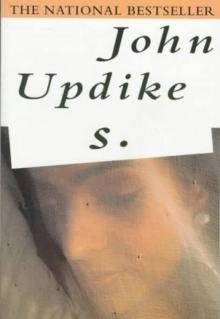 S.
S.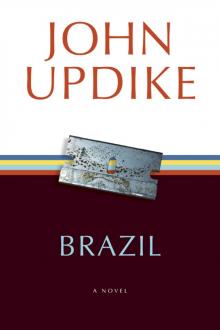 Brazil
Brazil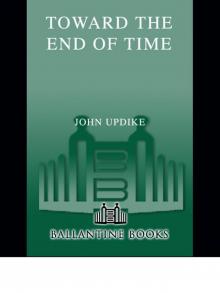 Toward the End of Time
Toward the End of Time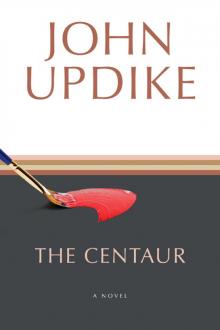 The Centaur: A Novel
The Centaur: A Novel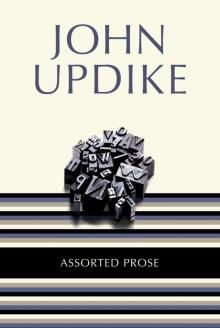 Assorted Prose
Assorted Prose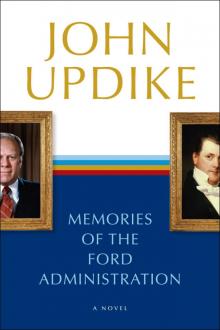 Memories of the Ford Administration
Memories of the Ford Administration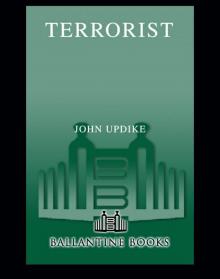 Terrorist
Terrorist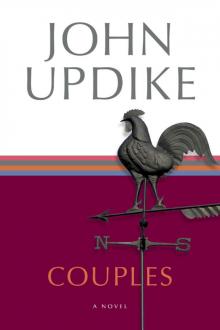 Couples: A Novel
Couples: A Novel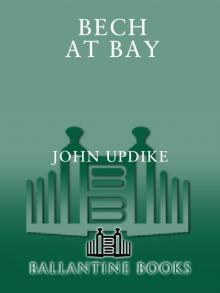 Bech at Bay
Bech at Bay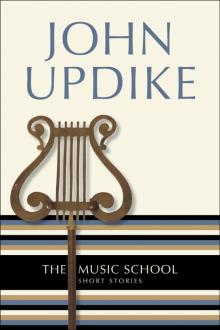 The Music School: Short Stories
The Music School: Short Stories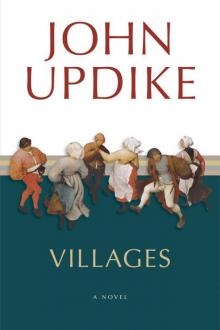 Villages
Villages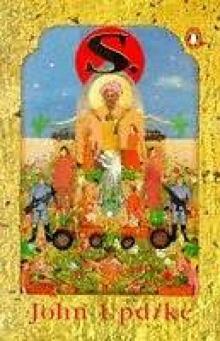 S
S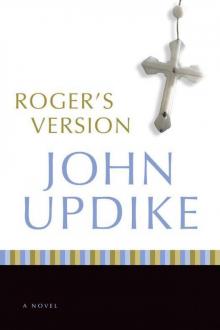 Roger's Version
Roger's Version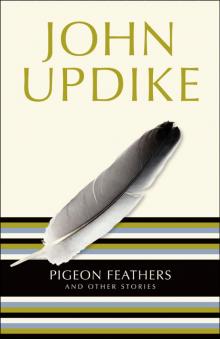 Pigeon Feathers
Pigeon Feathers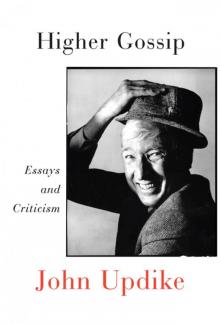 Higher Gossip
Higher Gossip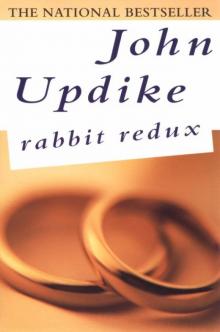 Rabbit Redux r-2
Rabbit Redux r-2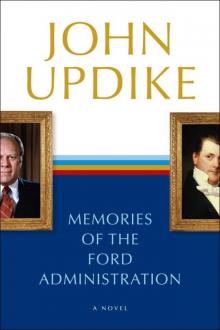 Memories of the Ford Administration: A Novel
Memories of the Ford Administration: A Novel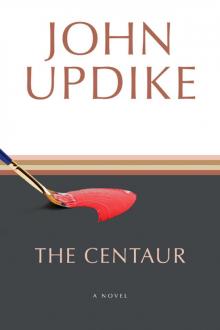 The Centaur
The Centaur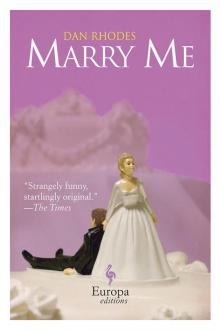 Marry Me
Marry Me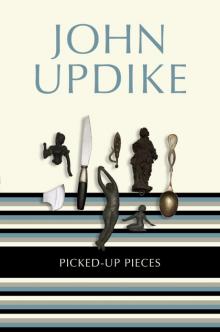 Picked-Up Pieces
Picked-Up Pieces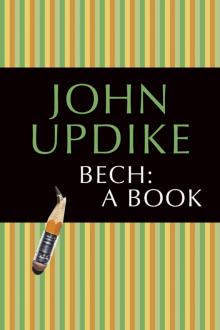 Bech
Bech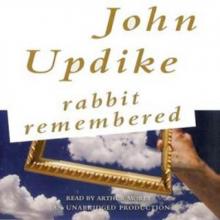 Rabbit Remembered
Rabbit Remembered Trust Me
Trust Me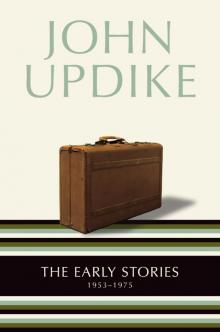 The Early Stories
The Early Stories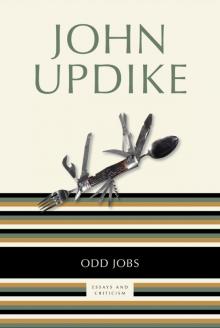 Odd Jobs
Odd Jobs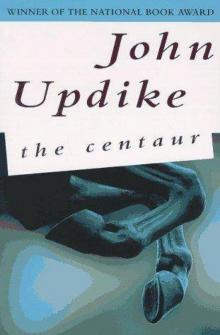 The Centaurus
The Centaurus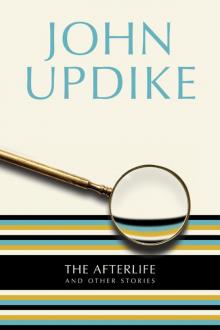 The Afterlife
The Afterlife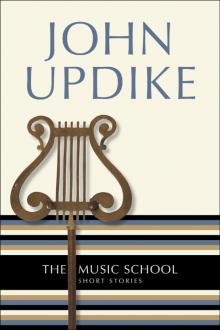 The Music School
The Music School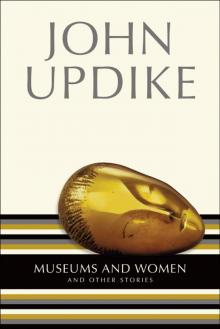 Museums and Women
Museums and Women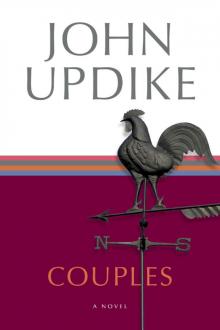 Couples
Couples